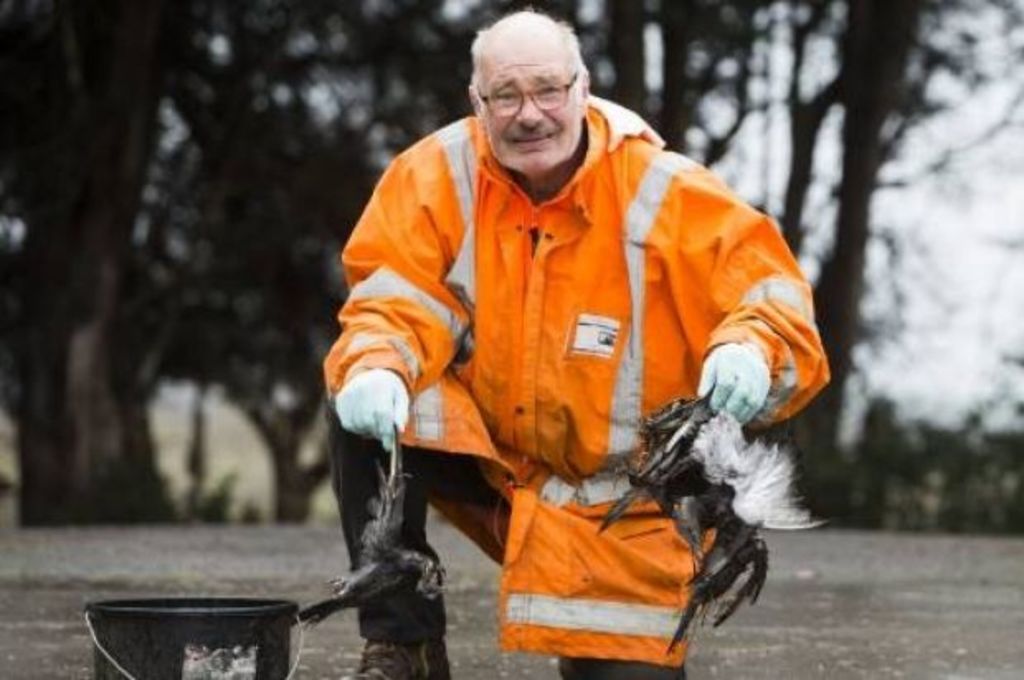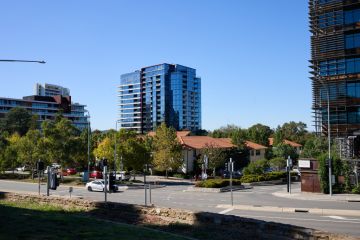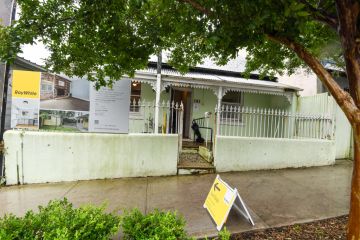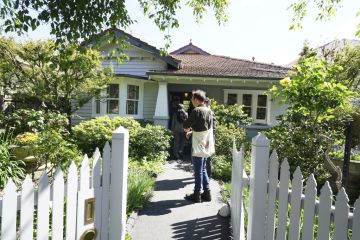A plague of pigeons, and their poo, is ruining this New Zealand property

An inch of pigeon poo. That’s what Jan Kruit has had to clean off the roof of his home. And not just once, but four times this year.
Kruit grimaces as he holds his thumb and forefinger apart to indicate the depth of the droppings – “and smelling”, he says, prompting further grimaces.
The Dutch couple, Kruit and his wife, Margreet Kruit-Oerlemans, have invited Fairfax journalists to their Meremere, New Zealand home on Island Block Road to see how the pigeon infestation is affecting their lives.
There have been Kruit-Oerlemans’ stomach troubles, fruit growing outside they dare not eat, and the tank water they now boil before using, on the advice of a doctor.
Not to mention the pigeon carcasses they clean up each day.
Kruit said that in 2013, when they first moved in, “There were no birds here.”
A lot has changed since then.
As well as the four roof cleans, Kruit’s emptied the gutters of pigeon poo three times this year.
- Related: NZ house for sale for $1
- Related: Getting rid of unwanted pests
- Related: Termites, rising damp and asbestos
He believes some type of chemical used on the cornfield is killing the pigeons. He said it isn’t unusual to have to remove nine carcasses from their property a day.
As we talk in their tidy living room, pigeons swoop and dip around the house, drinking from the couple’s pond.
Kruit takes us outside and on the power lines just opposite their house sit at least 20 pigeons, and we see scores and scores lift off from the back cornfield.
He shows us the remains of nine birds he collected just that day, and corn can clearly be seen amidst the varying states of decomposition.
The Waikato Regional Council said that there are few rules on the control of pigeons.
Staff do advise that there are a couple of ways to control unwanted pigeons, such as shooting them – which does mean that normal firearm rules apply.
There are also alphachloralose-treated peas – available from rural supply stores. You follow the instructions on the pack as to how to use them.
And there’s exclusion by way of netting, spikes or similar – these can be seen on buildings and bits of power poles to prevent pigeons from landing.
If caught, the birds must be humanely euthanised.
Hamilton City Council does a pest-control company to cull pigeons in some city parks.
“The company employs experienced professional marksmen who cull the birds using high-powered air rifles. When these operations are under way at night, we close the park to the public and have staff on site, and part of our process is an immediate site clean-up pre-dawn,” parks and recreation manager Maria Barrie said.
There is also a pigeon cull conducted at Hamilton Lake Domain at least once a year.
“They defecate profusely on park assets such as footpaths, benches and residents’ private vehicles. Historically, they roost and nest in phoenix palm trees and they create quite a mess.
“If we didn’t control the feral pigeon population in specific parks, we would have a very large population of the birds doing more damage to our assets,” Barrie said.
“We also have an obligation under the Regional Pest Management Strategy to control pest animal species such as pigeons.”
And those worried about racing pigeons should not fear they’re being caught up in the culls.
The Hamilton City Council has learned from a local pigeon racing club contact that racing pigeons do not join flocks of feral pigeons.
“Pigeon racers usually have their birds well trained and cared for,” Barrie said.
We recommend
We thought you might like
States
Capital Cities
Capital Cities - Rentals
Popular Areas
Allhomes
More







